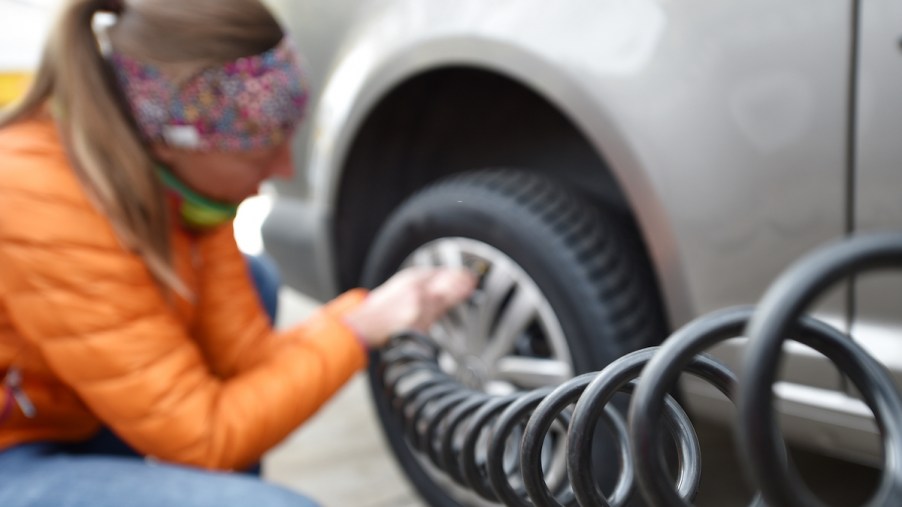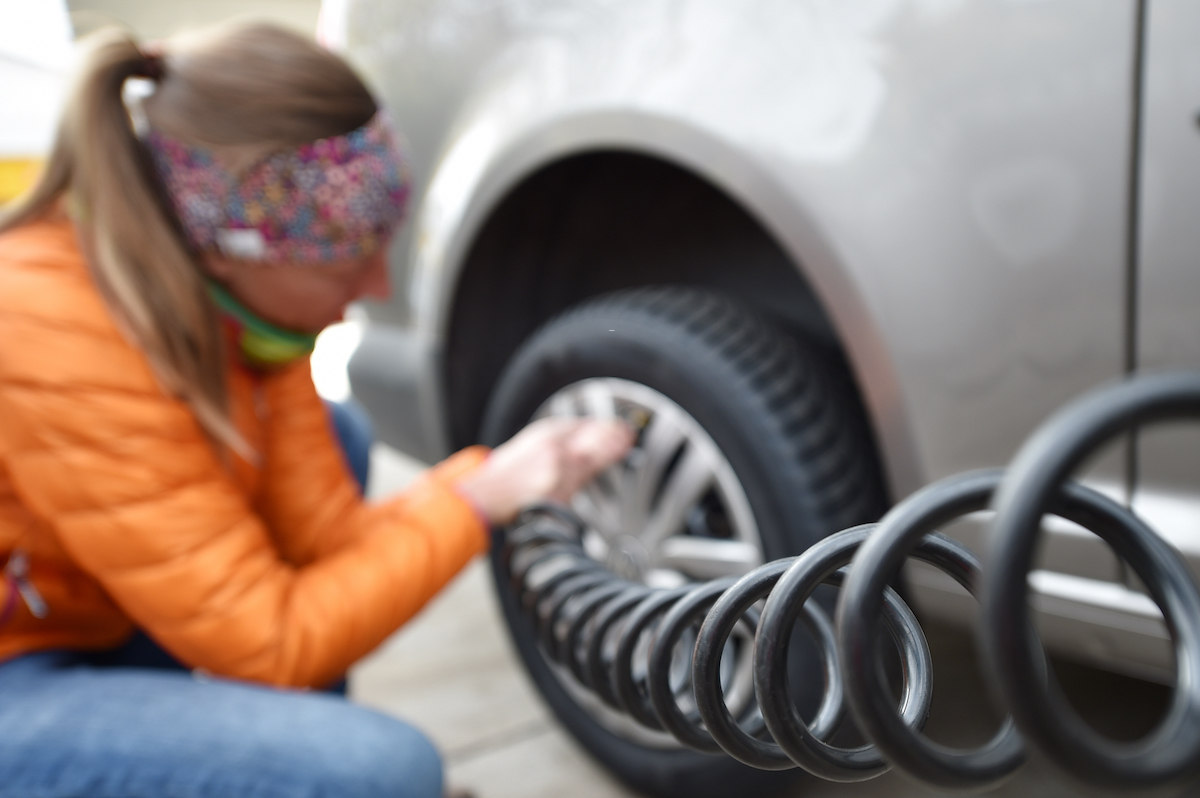
Here’s Why Tire Pressure Fluctuates In Winter
Winter driving presents all sorts of hazards and perils, but we often don’t think of the cold weather’s effect on tire pressure. Nevertheless, winter weather affects vehicles’ tires, often in low pressure. Curious about why that happens and what you should be aware of when it comes to driving on tires with low pressure? Read on.
Why does tire pressure fluctuate in winter?

It can be a mystery for some drivers why they seem to experience low tire pressure in the winter. But if you know your science, the explanation is pretty intuitive.
Consumer Reports says tire pressure warning lights are likelier to go off in cold weather because lower temperatures create denser air, lowering the pressure in tires.
The pressure decreases by about one pound per square inch for every 10 degrees the temperature declines.
Dangers and benefits of driving with low tire pressure
Plenty of hazards come with driving on underinflated tires, and if your car’s tire pressure warning light comes on, you need to take it seriously. Risks include a greater chance of tire failure, compromised handling, and increased wear and tear on your tires. You could also experience a reduction in your vehicle’s fuel efficiency due to low tire pressure.
Some people think that lowering their tire pressure can help them drive in the snow, but that’s not the case. However, lower pressure can sometimes offer a few advantages. First and foremost, it can make it somewhat less likely you’ll end up with a tire puncture. If you’re an avid off-roader, you might also find that lowering your tire pressure can help you get more traction on rocky terrain.
Nevertheless, the dangers far outweigh the benefits, so if you see your warning light, check your tires as soon as possible.
Tips for preparing your car for winter driving
Of course, keeping an eye on your car’s tire pressure is just the tip of the iceberg when it comes to steps you should take to prepare your car for winter driving. One of the most important things you should do if you live in a cold and snowy climate is install snow tires. Winter tires even trump four-wheel drive when it comes to helping your vehicle navigate snow-covered roads.
Speaking of tires, you’ll also want to check your treads before heading out into wintry conditions. Nothing is more important in the snow than making sure you have sufficient traction, and your treads will go a long way toward ensuring you do.
Treacherous wintry driving conditions also call for properly working brakes. That means you’ll need to make sure you have sufficient brake fluid and that your brake pads are in good shape. Checking your car’s anti-lock braking system is also essential because it can help you avoid dangerous skids when the roads get slippery.
We also recommend ensuring your battery is in top shape as winter approaches. Countless motorists have been left stranded when the cold weather zapped their battery’s energy.
Winter can create serious challenges for drivers, but with proper knowledge and preparation, you’re much likelier to get through the season without incident.


